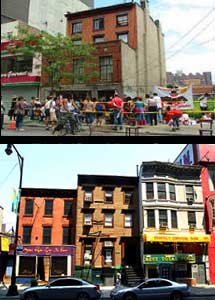The battle between Robert Moses and the West Village activists led by Jane Jacobs in the 1960s set the tone for how struggles over development in New York City are played out today. But if Deputy Mayor Daniel Doctoroff's Moses-style mega-building threatens many poor and working-class communities, Jacobs' small-scale neighborhood sensibility poses the danger of a different sort of gentrification....
The city recently announced, for instance, that it plans to spend $2 million commemorating the abolitionist history of Downtown Brooklyn. This marked a success for FUREE. Prior to its organizing efforts there was little public awareness of this history and no effort to incorporate it into the redevelopment.
The city does not, however, plan to preserve the houses on Duffield Street in the area that many locals and scholars believe were part of the Underground Railroad. But commemorating history will mean little if Fulton Mall's black community gets pushed out, and the cultural significance of the Duffield Street homes is ignored.
Downtown Brooklyn is the third most active commercial area in New York City, after Midtown and Downtown Manhattan. The Downtown Brooklyn redevelopment was supposed to bring new jobs into the area, but instead it has created luxury housing, and helped kick out many of the existing businesses, which cater to a largely African-American clientele. This is, apparently, what the city means by "economic development."
